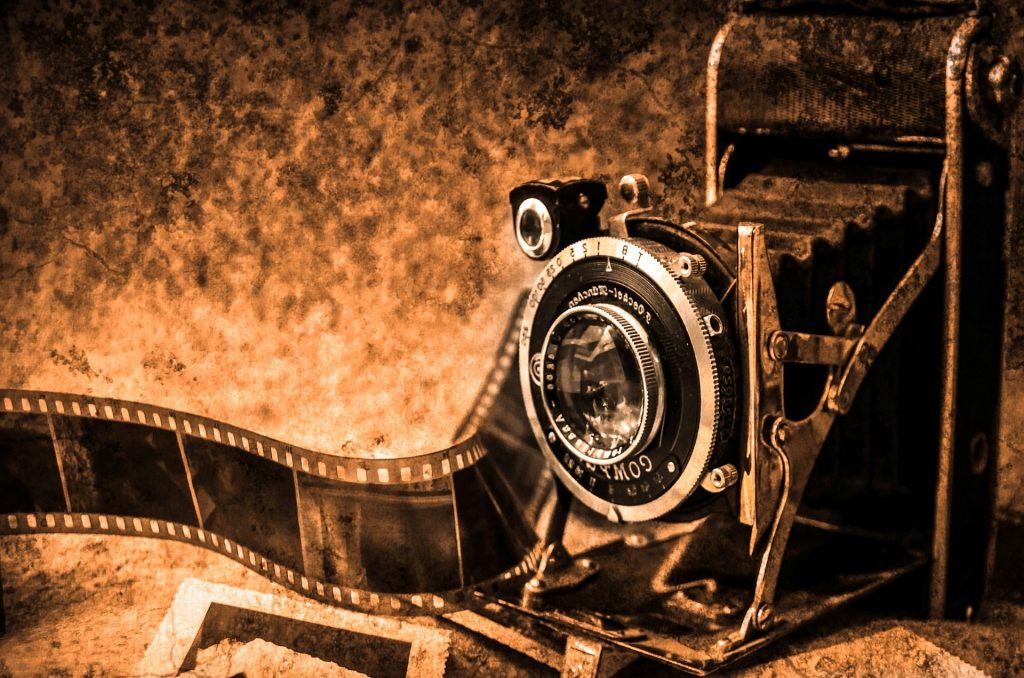
HOW PATENTS AND INVENTIONS CHANGED THE WORLD OF CINEMA
The Lumiere brothers are considered the fathers of cinematography as an independent art form, who introduced their cinematograph in Paris in 1895. But the film as a technical miracle was created much earlier.
In the second half of the 19th century, especially in the last decade, inventors and designers in many countries tried to build a device that could detect people, land, and animals. He often had an accessory, a projection device, making it possible to project moving photos onto the screen. There was a boom in patents for such devices, especially in Paris, Berlin, St. Petersburg, and London. However, it was a very unstable device for which the inventors often did not get any subsidies and financial support to improve and upgrade their devices.
If we want to map film’s origin with the first patents that developed film history, we must logically search among the pioneers of photography. French inventors Luis Jacques Daguerre and Joseph Nicéphore Niépce found a way to create a light recording of any object for the camera using a camera obscura and a specially modified silver-plated copper plate.
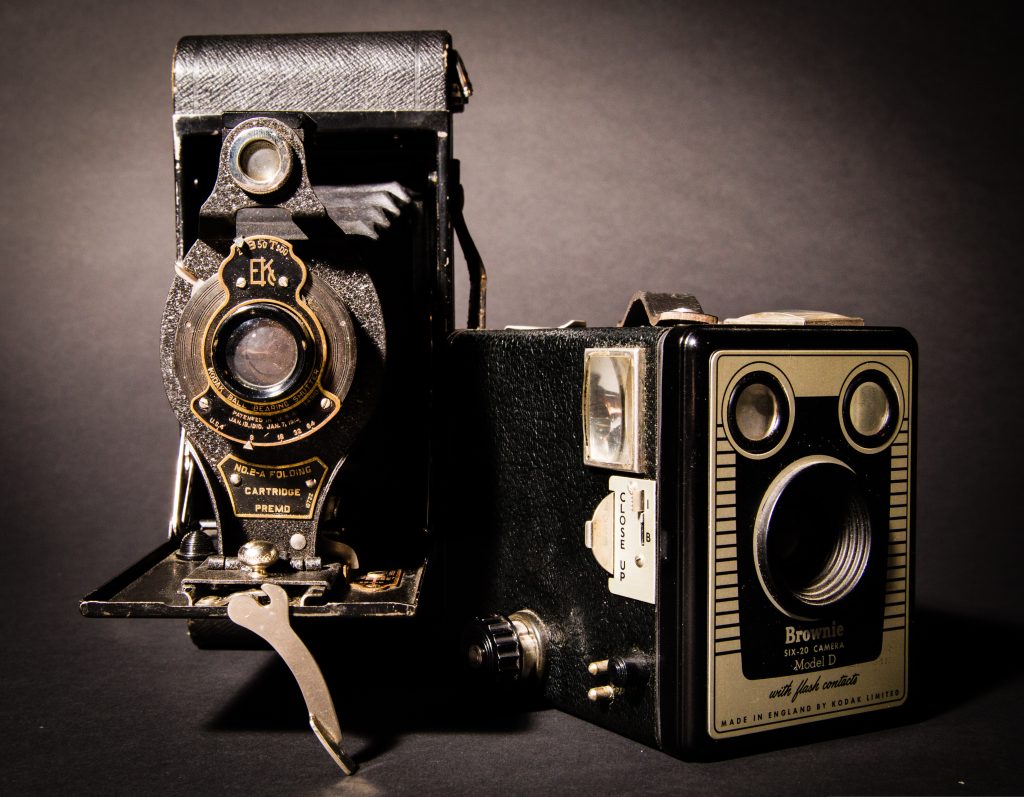
Photographers paved the way to cinematography. Source: Pixabay
The magic lantern (Lanterna magica), an image projector which projected an inverted image through a small hole using a light source, was later developed by Dutch scientist Christiaan Huygens, who is considered to be one of the possible inventors.
Despite this, it is more likely the credit for coining the term Laterna Magica was gained by Thomas Rasmussen Walgensten, who demonstrated the invention in Paris, Lyon, Rome, and Copenhagen. The magic lantern’s history has many gaps and more names seem to appear also in Germany, such as Johann Franz Griendel, who was indicated as the inventor of the magic lantern or instrument maker Johann Wiesel.
An invention, that changed the world of moving media and paved the way for film industry development, was the phenakistiscope (1832), a simple spinning cardboard disc attached vertically to a handle that simulated the movement of the pictures painted on it.
The phenakistiscope, initially misspelled and later adopted as an official term, started developing in the 1820’s by a Belgian physicist Joseph Plateau, whose work inspired the Austrian professor of practical geometry Simon Stampfer. They both invented their first versions of phenakistiscope, but Stampfer made multiple modifications – double-sided discs, which might have landed him and Mathias Trentsensky from art dealer and publishing company Trentsensky & Vieweg a patent on May 7th, 1833.
Joseph Plateau also made some modifications and came up with new ideas, for example, he created a combination of his phénakisticope and his Anorthoscope sometime between 1844 and 1849 and thought of combining the phénakisticope with the stereoscope by Charles Wheatstone.
Another version of the phenakistiscope, a bestseller in England, was patented here by Thomas Ross in 1869 and 1871. This one used a pulley and handle system to turn two discs and make a motion picture.
Only a year or two later after the first phenakistiscope, British mathematician William George Horner took the idea of this invention, curved it, and made a drum-like version. The cylindrical variant was called the zoetrope and published details about its mathematical principles in January 1834. After this, a lot of similar devices were developed and registered in numerous countries, but the „definitive“ zoetrope was invented in 1865 by William Ensign Lincoln, who was also granted a patent in the United States (1866 and 1887), United Kingdom (no. 629) and France (filed in 1867). Lincoln’s patented version had „the viewing slits on a level above the pictures, which allowed the use of easily replaceable strips of images.“ The paper discs were not always commercially produced. In 1868 an improved zoetrope was constructed by James Clerk Maxwell, who made the virtual image sharper. However, he never marketed his invention.
While Joseph Plateau, William Lincoln and other inventors and photographers worked on their modifications, gaining rights to them and improving the technological procedures in this industry, a slovak Jozef Maximilián Petzval, constructed a portrait lens with a brightness that made it possible to shorten exposure times to a few seconds (1840). However, this invention was not patented by the Slovak scientist. Although he won a silver medal for his discoveries in optics at the Paris exhibition, he had no other profit from these inventions. In the forties of the 18th century, Petzval’s photo lenses reached the world market, thanks to the enterprising Viennese optician Peter Wilhelm Friedrich Ritter von Voigtländer, who mass-produced them.
The journey from photography to film is a series of successive discoveries that cannot be overlooked when studying the birth of film art. Inventions and patents preceding the birth of film can also be found in the interesting discovery of moving photography by the Englishman Edward J. Muybridge. Based on a bet with a friend, he tried to find out through an experiment whether there is a moment when a galloping horse in a race has all four legs in the air. He set up 24 photographic devices in a wooden building, hung a white horizon on one edge of the racetrack, and placed several cameras at regular intervals on the other. He laid ropes across the track, which were gradually released by the spring shutters of the cameras when the running horse broke them. The newspaper wrote about this big event, stating that the horse actually “freezes” in mid stride. The experiment quickly spread from the U.S. to the whole world and has gone down in history as one of the most important moments in moving picutre development proving two great claims: horses leave the ground and recording motion is possible. It took him six years to work on the proof, he created several photographic devices and took over 20,000 pictures.
The series of photos under the title ‚Attitudes of Animals in Motion‘ helped with gaining a patent for the above mentioned method of stop-action series photography in 1897.
The year 1861 brought an important patent in this field of cinematography. The patent (US patent no. 31,357) for a Kinematoscope made by Coleman Sellers described the device as an improvement in exhibiting stereoscopic pictures or photographs that were mounted on the blades of a spinning paddle. They were hidden in a cabinet that you could peek into through slits. The first images Sellers made for a Kinematoscope were the photographs of his children working at his factory in Philadelphia.
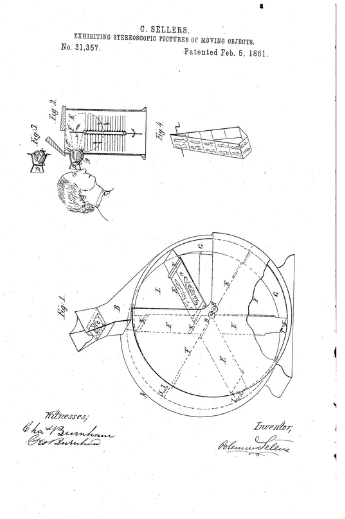
Kinematoscope. Source: Google patents
Fast forward a few years and you can read about Mr. Muybridge again, who in 1883 invented a camera that made it possible to capture an entire series of exposures on a single plate, thus obtaining a motion diagram. Later, he constructed a camera, the so-called zoopraxiscope, a projector that made it possible to view photographs stuck to a disc, when turning a crank, the disc rotated and a moving image was projected onto the screen through the lens. This camera took a separate image of one motion phase with each exposure. During the construction and continuous improvement of his cameras, he also invented several special mechanisms-devices that were crucial for the later development of the film industry. Chronophotographer, as this inventor was called in the eighties, applied for a patent in December 1881 (United States Patent No. 251, 127) entitled „Picture-Feeding Device for Magic Lanterns“. The invention was also called a slide-changer. He assigned the rights of this patent to the Scovil Manufacturing Company of Waterbury, Connecticut, whose cameras he had used in his earlier chronographic work at Palo Alto, California.
However, all of the then-often patented inventions such as stroboscopes and praxinoscopes had one thing in common. They were short-lived and unreliable, mainly because they abounded in technological imperfections. It was difficult to shoot and develop the film strip, which broke very often. Especially excellent inventors such as the Pole K. Proszynsky and the UkrainianJ.A.Timčenko did not have enough funds to improve their equipment or patent and market their inventions. They were able to do it only at the beginning of the 20th century.
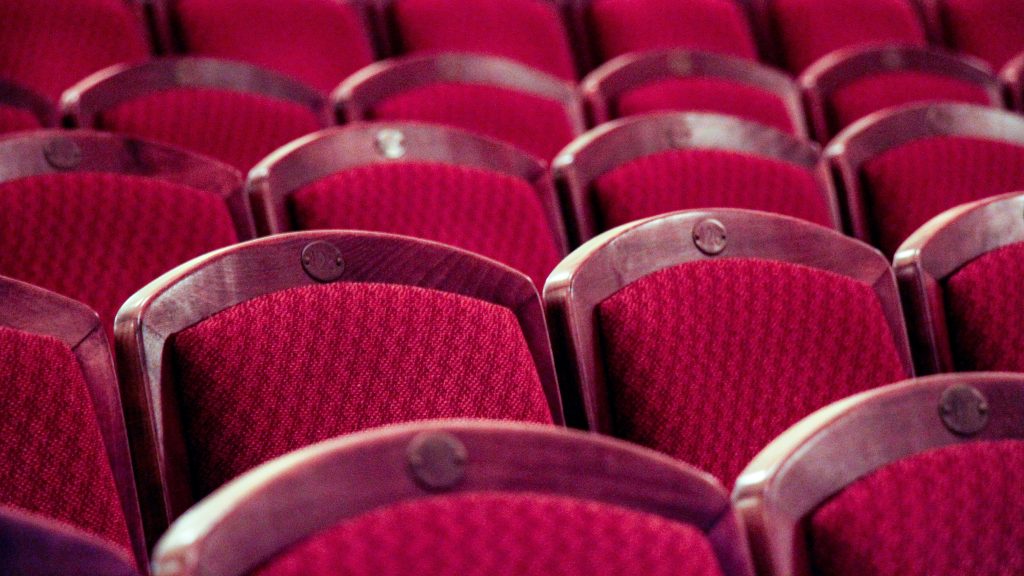
Source: Pixabay
In contrast, the inventor Thomas Alva Edison had enough funds. And he knew how to use it. And he did not hesitate to patent his inventions. At first, it was a 35 mm sliding celluloid strip for the camera and projector. An important patent is of course the cinematograph from 1891, which was followed by the kinetoscope. He patented it with William K. Dickson and it allowed one person to watch a film through an eyepiece with a magnifying glass. A significant milestone in film history was also the founding of the Blak Mary film studio, where Edison produced special films for kinetoscopes. It was located on the original Edison Laboratory site in West Orange, New Jersey. Edison also met with Mr. Muybridge, so the two of them could discuss the potential combining of Muybridge’s Zoopraxiscope for vision, and Edison’s Phonograph for audio. This was a big step forward for the cinematographic industry that opened up the door for a new type of media: the audiovisual.
Edison also came to the picture, when the invention of Phantoscope was born. But let’s go back to the beginning. Phantoscope was a film projection machine that was made by Charles Jenkins in the 1890’s. Jenkins started alone, but later met his classmate Thomas Armat, who agreed to assist him with the modifications. Their first ever movie had a premiere in a jewelry store in Indiana, where pictures of a dancer performing a „butterfly dance“ were projected. Armat and Jenkins both attended exhibitions together, but soon after one they split due to their turbulent relationship, which resulted in at least two disputes over the rights to Phantoscope. They both wanted a solo patent for the invention. The result was: Jenkins received a patent for his initial projector and Armat for the modified version, which he finally sold to Thomas Alva Edison. The Edison Manufacturing Company agreed to manufacture the machine and to produce films for it, as long as it will be advertised as Vitascope, Edison’s new invention.
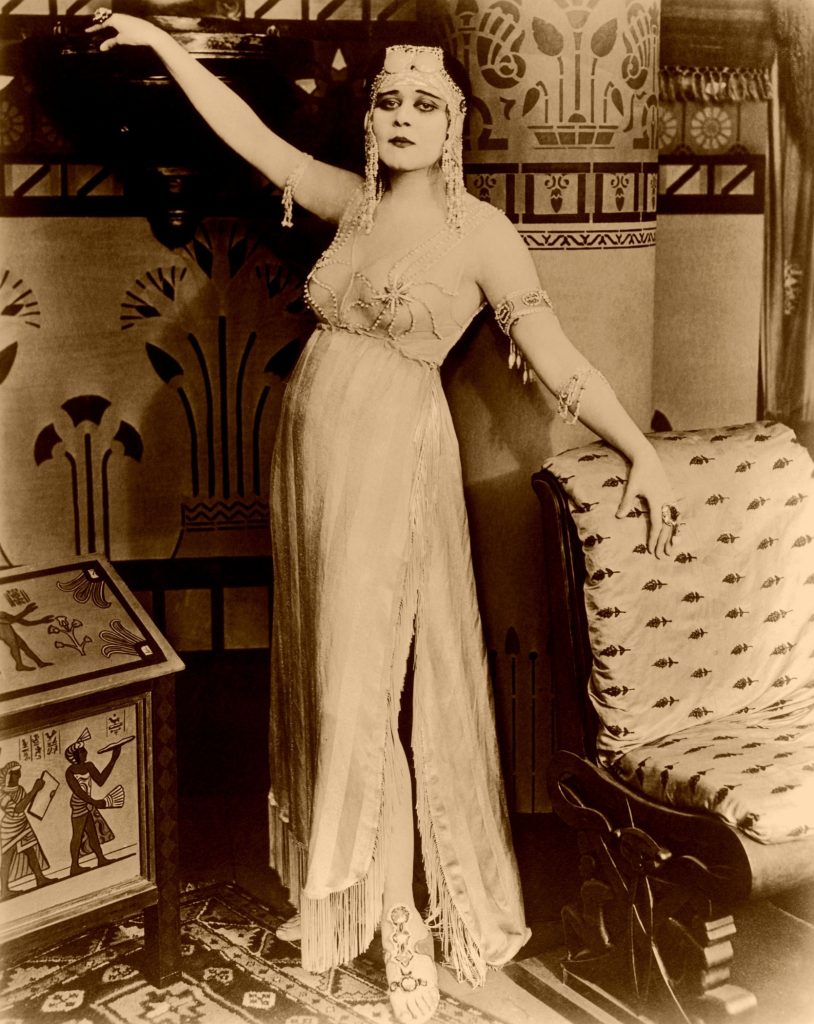
Cleopatra. Source: Pixabay
Motion Picture Patent Company
The first years of American film production were accompanied by several lawsuits. By 1905, development was hampered by patent fights, a second ten-year round of legal disputes between the Edison-led Motion Picture Patent Company (MPPC) and independent producers. However, attempts at monopolization failed. The independents, almost all of whom came from cinema operators‘ backgrounds, knew the audience’s tastes better and represented a more effective concept with their move to feature-length films and the introduction of the movie star system.
MPPC also known as the Edison Trust was founded in December 1908 and effectively terminated in 1918 after it lost a federal antitrust suit. MPPC was a trust of all the major US film companies and local foreign branches (Essanay, Selig Polyscope Edison, Biograph, Vitagraph Lubin Manufacturing, Kalem Company, American Pathé, Star Film Paris,), the leading film distributor (George Kleine) and the biggest supplier of raw film stock, Eastman Kodak. The MPPC ended the domination of foreign films on US screens, standardized how films were distributed and exhibited within the US, and improved the quality of US motion pictures through internal competition. It also discouraged its members‘ entry into feature film production, and the use of outside financing, both to its members‘ eventual detriment.
Problems with licensing in the USA started in the nineties of the 19th century when Thomas Edison owned the American patents for a series of film cameras. The MPPC was preceded by the Edison licensing system, in effect in 1907–1908, on which the MPPC was modeled. The Edison Manufacturing Company’s patent lawsuits against each of its domestic competitors crippled the US film industry, reducing production mainly to two companies: Edison and Biograph, which used a different camera design. This left Edison’s other rivals with little recourse but to import French and British films.
The MPPC established a monopoly on all aspects of filmmaking. Eastman Kodak owned the patent on raw film stock, and the company was a member of the trust and thus agreed to sell stock only to other members of MPPC. Importantly, patent control over film trusts ensured that only member studios could film, and projector patents allowed trusts to enter into licensing agreements with distributors and theaters – thus determining who and where their films would be shown.
The end of the MPPC came with the federal court’s decision in United States v. Motion Picture Patents Co. on October 1, 1915. The court held that the MPPC’s actions went „far beyond what was necessary to protect the use of the patents or the monopoly that went with them“ and were therefore an unlawful restraint of trade under the Sherman Antitrust Act. The Court of Appeal rejected MPPC’s appeal and officially closed the company in 1918.
The Lumière brothers
The Lumiere brothers are often fondly said to be the inventors of film. Rather, they brought this invention to perfection by being able to build on the successful products and discoveries of their predecessors. Thanks to his invention of the cinematograph from the workshop of the gifted designer J. Carpentier, According to the Lumiere brothers, the cinematograph was just something of a technological curiosity following the successful years of new inventions in the world of photography. They had no idea that it would have such a huge commercial use and would be the seed of a new gigantic industry.
They knew about various attempts to capture movement on film, in Paris they saw a new attraction – Edison’s kinetoscope. When they took over the factory from their father in 1892, they decided to focus their efforts on improving film technology that would allow moving photographic images to be projected onto a large screen. The contract between the two brothers stipulated that they would share equally in all their inventions and business activities. Until 1918, all their work was signed with two first names.
A novelty of the cinematography of the Lumière brothers was the so-called step feed of the film strip, using a grabbing mechanism, which enabled an even pace of projection.
In 1984, they filmed the first film using a new device. Leaving the Lumière factory in Lyon-Mont Plaisir. It was shown for the first time in Paris on March 22. 1895. The projection was organized by the Association for the Support of National Industry. The first screening for which tickets were also sold was held on 28.12. at the Grand Café on the Boulevardz des Capucines in Paris. In addition to the already mentioned Departure from the Factory, the Arrival of the Train, Swimming in the Sea Blacksmith and others were shown.
The Lumiér brothers were known for their thorough knowledge of the history of photography and the ability to perfect the process of their creation.
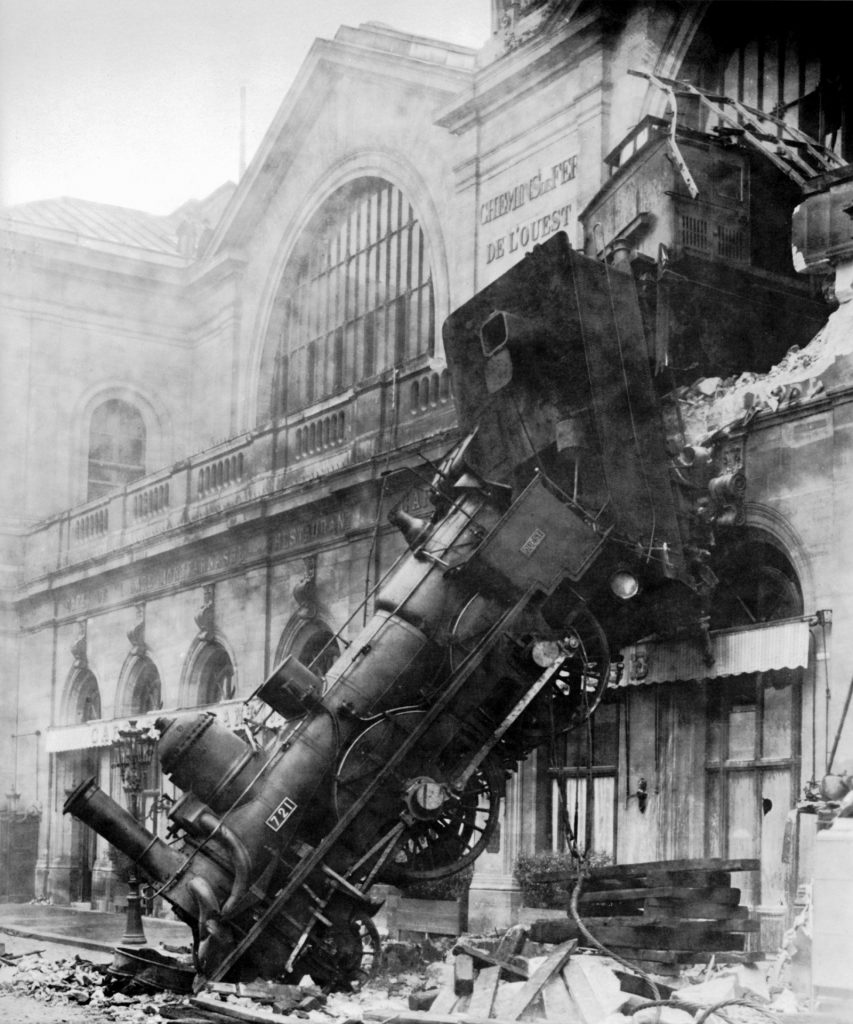
Source: Pixabay
The Lumière brothers patented autochrome in 1903 (autochrome Lumière means automatically colored). This is an early color photography process that was commercially produced between 1907 and 1935. It was the most widely used color photography process at this time.
Autochrome is, like today’s slide, a colored slide. The glass plate is covered with a colorful mosaic of microscopic potato starch grains dyed orange, green, and blue, covered with a black and white panchromatic emulsion. During the exposure, the light then penetrates through the different colored grains, and after being developed into a positive, a colored image is created. We observe the black-and-white image on the emulsion through the same color filters as when it was exposed. With this invention, he changed not only the photography industry but also the development of newer camera technology for filmmaking.
Magician George Méliés
The first public screening was also attended by Georges Méliès, who revealed new possibilities in cinematography. While the Lumières made more documentaries that show reality, Méliès used his theater and magic experience to bring effects, film tricks, and action to cinematography. The brothers quickly realized the value of capturing scenic footage around the world and showing it for projection or selling it with the camera. For commercial reasons, they refused to transfer the patents for their invention to Georges Méliès. He turned to his London friend, inventor, and first British director Robert W. Paul, who provided him with an intermittent mechanism (kinescope) with which he made his first film Une partie de cartes (Party of Cards) in 1896, a replica of the same subject directed by Louis Lumière. He made many of his improvements and began showing his first short films. He founded his own production company, Star Film, and in 1897 created the world’s first film studio in his house in Montreuil. An important part of his films is the story. This is another fact by which they differ from the Lumières. The Lumière brothers mainly filmed documentary shots, while he inserted the plot and plot into his films, told the story. He also produced adaptations of books and fairy tales (e.g. 20000 Miles Under the Sea, Bluebeard, Cinderella, Journey to the Moon, Cleopatra). In the early 20th century, filmmaking was still a craft. There was no division of labor here, the filmmaker had to realize his film all by himself. Meliées also wrote the script himself, was an actor, creator and designer of scenes and backdrops, and developed the film in his laboratory. He was also a director and even sometimes a projectionist of his own works.
He often said about himself: „I was born with the soul of an artist, nature endowed me with great manual dexterity, versatile abilities, ideas, and innate acting talent. I always worked mentally but also physically.“
References:
MACEK, V., PAŠTÉTOVÁ J., 1997. Dejiny slovenskej kinematografie. Vydavateľstvo Osveta, 1997.5-8 s. ISBN 80-217-0400-4.
TOEPLITZ, J. 1989. Dejiny filmu. Praha : Vydavateľstvo Panorama 1989.34-35 s. ISBN 80-7038-016-0.
TÖTEBERG, Michael. Lexikon světového filmu. Praha: Orpheus, 2005. ISBN 80-903310-7-6.
Poslední trik Georgese Mélièse – Divadlo Drak | i-divadlo.cz. www.i-divadlo.cz [online]. [cit. 2019-06-03]
The Encyclopedia Americana (1920)/Cinematograph https://en.wikisource.org/wiki/The_Encyclopedia_Americana_(1920)/Cinematograph [online].
EADWEARD JAMES MUYBRIDGE – THE ZOOPRAXISCOPE 1879 https://archive.org/details/zoopraxiscope_animation
Era of exploration : the rise of landscape photography in the American West, 1860–1885, fully digitized text from The Metropolitan Museum of Art libraries
Müller M. Dějiny světové kinematografie – počátky. https://www.moderni-dejiny.cz/clanek/dejiny-svetove-kinematografie-pocatky/
„In the beginning: cinema’s murky origin story“. BFI. 27 February 2021. Retrieved 2021-03-02.
Louis Lumière, The Lumière Cinematograph. In:Fielding, Raymond (1979). A technological history of motion pictures and television: an anthology from the pages of the Journal of the Society of Motion Picture and Television Engineers. University of California Press. pp. 49–51. ISBN 0-520-03981-5.
Bohn, Thomas W. (1987). Light and shadows: a history of motion pictures. Internet Archive. Palo Alto, Calif. : Mayfield Pub. Co. p. 4. ISBN 978-0-87484-702-4.
Parkinson, David (2012). History of film (2 ed.). New York: Thames & Hudson Ltd. p. 16. ISBN 978-0-500-20410-8. OCLC 794136291.
Abel, Richard, ed. (2004-03-01). Encyclopedia of Early Cinema. Routledge. doi:10.4324/9780203482049. ISBN 978-1-134-56676-1.
Huygens, Christiaan (1629-1695) Auteur du texte. Oeuvres complètes de Christiaan Huygens. Supplémént à la correspondance varia. Biographie de Chr. Huygens. Catalogue de la vente des livres de Chr. Huygens / publ. par la Société hollandaise des sciences
Rossell, Deac (2009), „Early Magic Lantern Illustrations: What Can They Tell Us About Magic Lantern History?“
Prince, Stephen (2010). „Through the Looking Glass: Philosophical Toys and Digital Visual Effects“ (PDF). Projections. 4 (2). Berghahn Journals. doi:10.3167/proj.2010.040203. ISSN 1934-9688.
Stampfer, Simon (1833). Die stroboscopischen Scheiben; oder, Optischen Zauberscheiben: Deren Theorie und wissenschaftliche anwendung, erklärt von dem Erfinder [The stroboscopic discs; or optical magic discs: Its theory and scientific application, explained by the inventor] (in German). Vienna and Leipzig: Trentsensky and Vieweg. p. 2.
http://www.mhs.ox.ac.uk/exhibits/fancy-names-and-fun-toys/phenakistiscopes/
Herbert, Stephen. (n.d.) From Daedaleum to Zoetrope, Part 1. Retrieved May 31, 2014.
Veras, Christine (April 23, 2022). „Reanimating the History and the Forgotten Characteristics of the Zoetrope“. Animation. 17: 26–48. doi:10.1177/17468477221085412. S2CID 248367347 – via SAGE.
Maxwell, James Clerk (May 18, 1995). The Scientific Letters and Papers of James Clerk Maxwell. CUP Archive. ISBN 9780521256261 – via Google Books
„Le Cosmos; revue des sciences et de leurs applications“. April 10, 1869 – via Google Books.
http://www.mhs.ox.ac.uk/exhibits/fancy-names-and-fun-toys/zoetrope/
https://archive.org/details/zoopraxiscope_animation
„The History of The Discovery of Cinematography – 1860 – 1869“. June 7, 2012.
https://patents.google.com/patent/US31357A/en
https://es.wikipedia.org/wiki/Kinematoscopio
https://archive.org/details/zoopraxiscope_animation
„THE KINETOSCOPE STEREOPTICON, Film Machine 1896 | Machine-History.Com“. Archived from the original on 2009-11-11. Retrieved 2009-08-17. Kinetoscope at Machine_History.Com
https://fi.edu/en/news/case-files-francis-jenkins-phantoscope
Mgr. Juliana Bezáková

Odborníčka na duševné vlastníctvo na Oddelení informačnej podpory transferu technológií v Centre vedecko-technických informácií SR (CVTI SR). V rámci Strediska patentových informácií PATLIB a národného projektu NITT SK II poskytuje patentové informačné služby, najmä rešerše na stav techniky, ochranné známky a dizajny pre fyzické osoby, firmy aj vedecko-výskumné inštitúcie.
Mgr. Martin Karlík

Absolvent politických vied na Trnavskej univerzite v Trnave. Už 15 rokov pôsobí v mediálnej sfére. Pracoval ako zástupca šéfredaktorky a šéfredaktor v týždenníku spoločnosti Petitpress. Viac ako tri roky bol zástupcom šéfredaktora v lifestylovom magazíne BREAK, kde mal okrem iného na starosti aj sekciu vedy a techniky. Okrem toho je autorom a spoluautorom mnohých odborných monografií a článkov s historickou, zahraničnopolitickou či vedecko-technickou tematikou. Momentálne pracuje ako šéfredaktor a odborný pracovník oddelenia transferu technológií v Centre vedecko-technických informácií SR.
 EN
EN